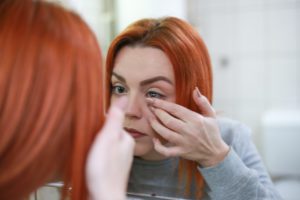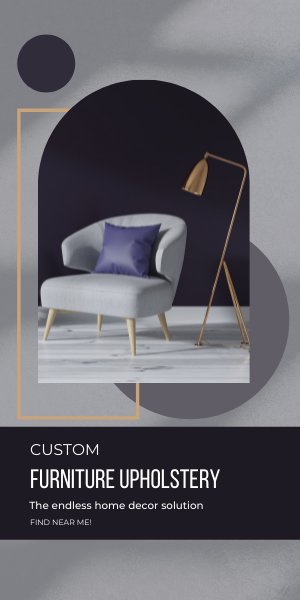The year 2025 is set to be a banner one for brown contact lenses, as trend forecasters tip warm earth tones to dominate makeup palettes and fashion runways alike. At the same time, style-savvy wearers are experimenting with colored contacts in ever-bolder hues to match their wardrobes or moods. From subtle honey washes to kaleidoscopic party tints, eye fashion is evolving faster than ever—and the options have never looked sharper.
From Novelty to Necessity – Why Shade Variety Matters
A decade ago, tinted lenses were largely treated as costume accessories. Today, they’re a mainstream beauty staple alongside lipstick or nail polish. Social video platforms reward dramatic close-ups; augmented-reality filters show users how a different iris tint can improve contrast with skin tone or hair colour; and global e-commerce makes once-specialty shades available overnight. The result is an unprecedented appetite for nuance: shoppers now want pigments that read professional in daylight, cinematic under studio lights, and captivating at dusk.
Colour Chemistry Breakthroughs
Behind every on-trend shade sits a quiet wave of material science. Nanoparticle dispersion lets manufacturers suspend ultra-thin pigment layers inside the lens matrix, so the tint looks vivid without blocking oxygen. Bio-polymer binders derived from corn fibre replace petroleum-based plastics, appealing to eco-conscious consumers and reducing irritation for sensitive eyes. Meanwhile, spectral-mapping software simulates how pigments interact with natural iris flecks, allowing brands to produce collections that complement rather than mask your underlying pattern.
The Five Must-Try Shades of 2025
| Trend Shade | Vibe | Who It Flatters | Why It’s Hot |
| Copper Caramel | Soft warmth | Medium to deep complexions, auburn or brunette hair | Marries the comfort of classic browns with a radiant amber glow often seen on 1970s film stock, reviving vintage nostalgia in a modern way. |
| Mystic Moss | Earth-meets-emerald | Olive skin, hazel eyes, forest-green wardrobes | Inspired by biophilic design, this muted green pairs with the sustainable-fashion movement and looks sophisticated in natural light. |
| Sapphire Smoke | Cool intensity | Fair skin, dark lashes, silver jewellery fans | Not the neon blues of early 2000s pop stars: this diffused navy contains grey undertones, making it office-appropriate yet unmistakably bold. |
| Blush Quartz | Rosy neutrality | All skin tones; brilliant on those who favour soft-girl aesthetics | A sheer pink veil that brightens the sclera and harmonises with peach blush or dusty-rose lip colour, giving a rested, luminous effect. |
| Ultraviolet Glaze | Futuristic edge | Nightlife enthusiasts, monochrome outfits, techwear lovers | Reflective pigments shift under UV-club lights, echoing iridescent beetle wings and cyber-punk fashion shows. |
Word to the wise: choose a diameter that leaves a hint of your natural limbal ring visible. This creates depth that many one-tone prototypes can’t replicate.
Matching Lens Tints to Seasonal Palettes
Fashion stylists predict 2025’s clothing shades will lean toward earthy terracotta, blush neutrals, and digital-lavender tech fabrics. Pairing eye colour with outfit tones can amplify or soften a look:
- Desert neutrals – Couple sandy linen suits with Copper Caramel for cohesive warmth.
- Sorbet pastels – Complement lilac dresses or mint trench coats with Blush Quartz so eyes whisper colour rather than shout.
- Infrared blacks – Add intrigue to head-to-toe charcoal ensembles by slipping in Sapphire Smoke; its blue-grey undertone breaks monotony without sparkles.
- Futuristic metallics – When wearing reflective chrome pieces, Ultraviolet Glaze echoes the garment’s sheen, achieving a cohesive sci-fi aesthetic.
Safety Still Reigns
Eye fashion is fun, but ocular health is non-negotiable. Follow these updated 2025 best practices:
- Buy from TGA-approved suppliers – Australia’s Therapeutic Goods Administration publishes updated white-lists; always cross-check brand registrations.
- Dailies over monthlies – Single-use lenses now dominate the premium tier, eliminating protein build-up and simplifying care routines.
- Dry-eye tech – Look for hydrogel blends containing hyaluronic micro-reserves; they release moisture gradually through an eight-hour workday.
- No sharing—even for selfies – Each iris possesses unique bacterial flora; swapping lenses can introduce pathogens that topical drops can’t easily flush.
Lens Care Hacks Every Enthusiast Should Know
Even with dailies, curious hobbyists often keep a few reusable statement tints. Extend their life safely by adhering to:
- 360-degree rub – Rotate the lens between thumb and index fingertip for five seconds during cleaning. Linear swipes miss debris hiding near the edge.
- Fresh-fill storage – Never top up old solution; instead, fill the case to overflow so bubbles carry dust away.
- No water, no tears – Tap water harbours acanthamoeba cysts. Even a quick rinse before insertion risks difficult-to-treat keratitis.
Sustainability: From Pigment to Packaging
Consumers increasingly ask whether their lens choices align with eco values. Here’s how brands are responding:
- Compostable blister packs – Plant-based PLA replaces conventional plastic, breaking down in commercial composting within six months.
- Solvent-free inks – Outer cartons now use soy-based dyes, preventing heavy-metal leaching during recycling.
- Carbon-neutral factories – Solar-powered curing chambers and on-site water recycling loops cut emissions by up to 40 percent.
When shopping, scan QR codes on the box. Transparent supply-chain dashboards tell you exactly where raw materials were sourced and how far the finished product travelled.
Digital Try-Ons & AI Shade Matching
Augmented-reality try-on apps once approximated colour overlays. In 2025 they go a step further: machine-learning algorithms study your skin undertone, melanin density, and even typical lighting conditions (office fluorescence vs. outdoor sun), then recommend specific tints and diameters. Some retailers integrate with smart mirrors, allowing you to see how Mystic Moss appears as you tilt your head under warm and cool bulbs. Early adopters report far fewer returns and greater comfort selecting daring shades online.
The Cultural Shift Toward Personalised Eyes
What makes this year’s palette feel revolutionary is not just new colours but new attitudes. Previously, people used cosmetic lenses to mimic genetically rare irises—think bright violet à la Elizabeth Taylor. Now the zeitgeist favours self-expression over imitation. Enthusiasts treat lenses as wearable mood boards: Copper Caramel on Monday for grounded calm, Ultraviolet Glaze Friday night to embrace future-forward confidence. Eye colour is no longer a fixed trait but a rotating accessory, as changeable as nail art or phone cases.
Looking Ahead
Lab reports hint at multi-zone tints capable of shifting hue depending on pupil dilation—so your eyes could fade from earthy gold in daylight to deep forest at sunset. Other R&D teams test photonic-crystal grids that bend light, creating true holographic patterns. While these prototypes may not hit shelves until 2027, they hint at a future where iris customisation rivals digital display technology.
In short, 2025 is the year lenses go from cosmetic novelty to curated statement piece. Whether you gravitate toward the understated elegance of Copper Caramel or the nightclub magnetism of Ultraviolet Glaze, today’s shade spectrum invites you to treat your eyes as the canvas they’ve always been—only now with sharper pigments, smarter tech, and a sustainability conscience to match. Try one, switch often, and let your gaze tell the ever-changing story you wish to share.






